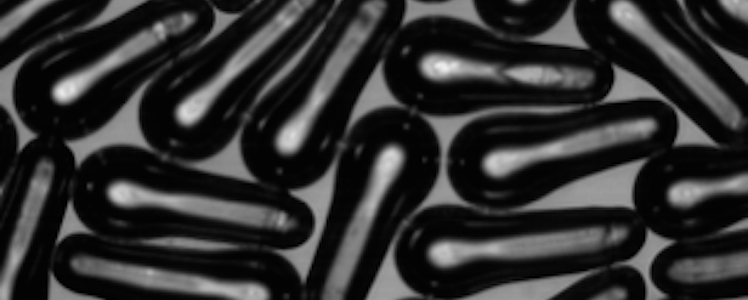Credit: Carnegie Mellon University Mechanical Engineering
Carnegie Mellon University's Mechanical Engineering and Chemical Engineering Professor Shelley Anna recently received a National Science Foundation grant for a project which will explore ways to optimize capsules, micrometer-sized liquid drops or bubbles covered in an elastic shell of nanometer-sized particles, for a wide range of therapeutic and commercial applications.
Capsules are known for their unique mechanical properties. They can control the release of specific substances, making them particularly useful in a variety of products such as drug delivery formulations, waste water treatment, cosmetics, paints and inks.
The droplet has a strong rigid shell, made up of molecules and nanoparticles which are adsorbed onto their outer surface. The project, titled "Synthesis and Dynamics of Elastic Capsules with Controlled Interfacial Elasticity," will explore how these nanoparticles move around, interact with each other and possibly aggregate on the surface of the capsule. By studying the behavior of these nanoparticles, Anna will investigate how these changes affect the elasticity of the capsule and whether the capsule can retain its shape.
"A goal of our project is to look at the connection of the surface properties with the arrangement of the nanoparticles on the capsule surface, as well as with the elasticity and deformability of the capsule as a whole," says Anna. "By understanding this, we can explore how to make the strongest, most stable type of capsule."
In order to study the elasticity of capsules, Anna will use a device developed in her lab called a microtensiometer. The instrument allows the group to measure the interfacial tension and interfacial elasticity of the capsule and correlate it with how the nanoparticles have collected on the surface of the capsule.
Because capsules are used in many different types of products, the results of this project will enable scientists and engineers in a number of fields to optimize capsule formulations in their work. "Through this project we hope to create a technology that could then be used in some wide-reaching applications," says Anna.
As a highly collaborative and interdisciplinary group, Anna and her team plan to maximize the applications of this project by sharing their results in innovative ways. The group will keep their industrial collaborators up to date on the results through regular workshops and short courses at Carnegie Mellon. Anna also plans to use the results of the project to develop educational modules for K-12, undergraduate and graduate students.
























